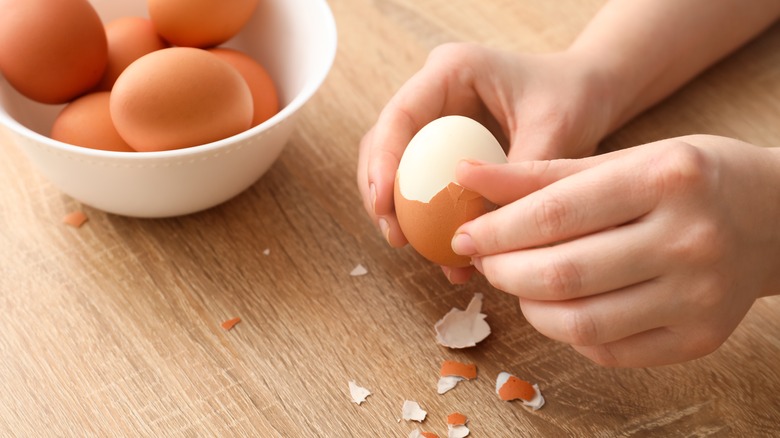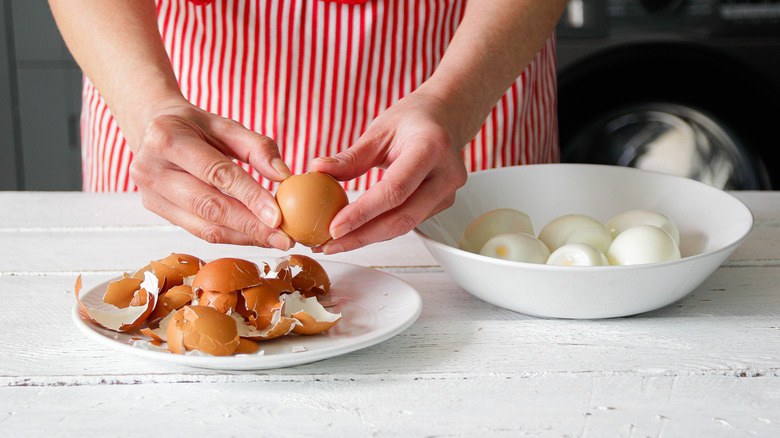How Long Boiled Eggs Need To Cool Down Before You Peel Them
Whether you're hosting a fancy-pants dinner party and serving a tray of deviled eggs or looking to spruce-up a bowl of instant ramen for a comforting solo meal, there are countless times in the kitchen when home cooks need to peel hard-boiled eggs – and it isn't always a fun task. Liberating those glossy, pearlescent beauties from their shells in one piece without chipping, busting, or totally obliterating that tender boiled egg white can feel like playing the board game Operation and losing. The more frustrated you get, the worse you perform, and those gelatinous boiled eggs pay the price. Back to the grocery store, right?
Not anymore. Your peeling technique, it turns out, might not actually be (entirely) to blame for compromised eggy structural integrity. The real culprit might be that your boiled eggs haven't had long enough to properly cook down first. Boiled eggs should be left alone to cool for about 15 full minutes before they are peeled. A thorough cool-down can make a world of difference for easily-peeled eggs, saving you time in the long-run. Set a timer and walk away: 15 minutes is enough time to wash a few dirty dishes, check the mailbox, take out the trash, and wipe down the countertops post-cook. Or for the quickest cool-down and subsequent peeling success, enlist the help of an ice bath to chill your boiled eggs (picnic snacks wait for no one!).
Give your boiled eggs an ice bath
To make a highly effective, highly efficient ice bath, simply fill a mixing bowl halfway with cold tap water and load it up with ice cubes. Then, carefully place your boiled eggs into the bath (a slotted spoon can help here) and cover with more cold tap water. Your eggs will be cool enough to peel in just five minutes, but for optimal results, leave them in the ice bath for a little longer.
In addition to complete cooling, shocking freshly-boiled eggs in an ice bath causes the egg whites to contract, physically separating from the interior of the shell and loosening the membrane bond, which facilitates even easier peeling. Ice baths also prevent still-hot eggs from overcooking, which can yield an unpleasantly gummy, discolored interior. That dreaded "green ring" encircling the yolk is totally safe to consume (it comes from iron sulfide, a green-tinted compound caused by the chemical reaction of the egg's iron and sulfur heating up and intermingling), but it isn't very cute or egg-yolk sunny.
Still, assembling an ice bath isn't the only way to expedite the egg-cooling process. You can transfer those freshly-boiled beauties to a metal bowl and pop them in the fridge to chill faster. Or you can carefully place the eggs in a colander and run them under cold tap water for five minutes.

